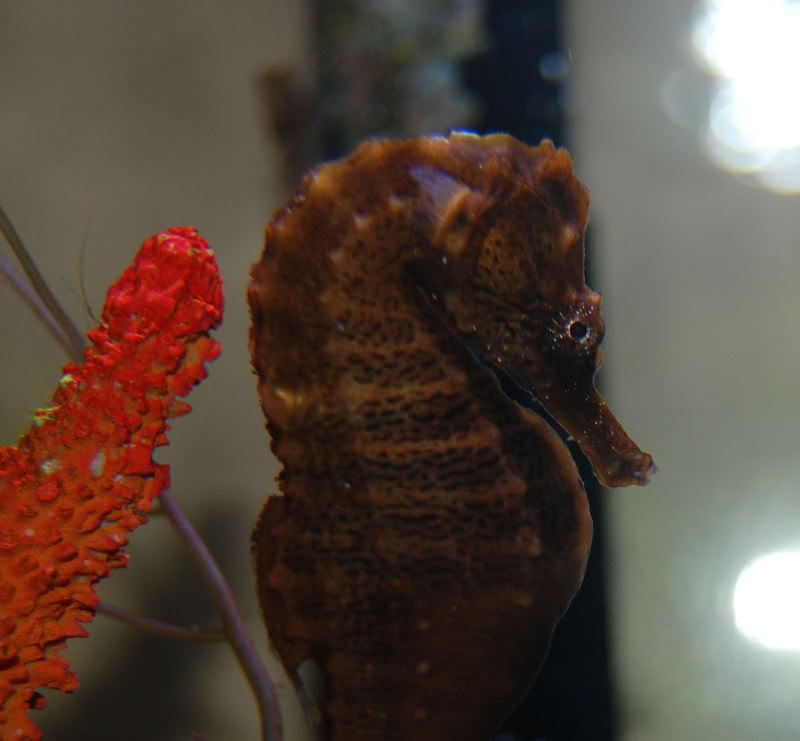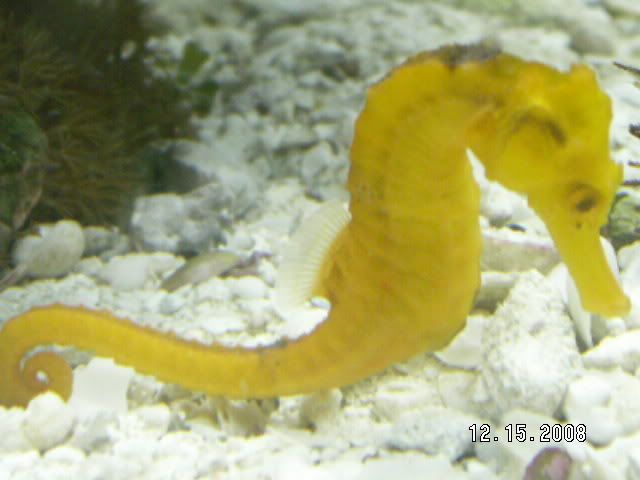teresaq
Active Member
Horses that are 5 to 7 inches should be comfortable in a 29 gal tank. They make a 37 gal cube that makes a wonderful horse tank. If you can find a tall tank all the better. The smaller species would be fine in a 15 to 20 gal tank for a pairH. Erectus - There are the southern and northern variety of this species. Northern fry are Pelagic-dont hitch at birthSouthern fry are Benthic-hitch at birth
both are 5 to 7 inch long-may reach 8 inches
temps need to be 72 to 77 degrees
Tank-- at least 18 to 21 inch tall
H Barbouri aka Barbs
5 to 6 inches
Tank -- 18 plus inches tall
72 to 77 degrees
Fry are Benthic
H. Breviceps
3 to 4 inches
Tank -- 15 plus inches
65 to 69 degrees - chiller required
Fry are ?
H. Fuscus
3 to 5 inches
tank 15 inches Plus tall
72 to 77 degrees
Fry are ?
H. Kuda
4 to 7 inches
Tank -- 18 to 21 inches tall
72 to 77 degrees
Fry are Pelagic
H. Reidi
6 to 8 inches but could reach up to 12 inches
Tank -- 24 inches plus tall
72 to 77 degrees
Fry are Pelagic and one of the hardest to raise but it can be done
H. Ingens
12 inches
Tank 30 to 36 inch tall
68 to 78 degrees - would need chiller
Fry are Pelagic
H. Abdominalis aka Pot Bellied seahorse
12 inches plus
Tank- 36 inches tall plus
59 to 71 degrees - chiller required
Fry are Pelagic
H. Kelloggi
6 to 10 inches but may get as large as 12 inches
They are a Deep water seahorse
Tank for these horses I would say the taller the better. 30 plus inches (just my opinion-because of the deep water thing)
68 to 77 degrees, but would stick to lower temps
Fry are?
H. Comes AKA Tiger Tails
4 to 6 inches
Tank -- 18 inches tall
72 to 77 degrees
Fry are ?
H Zosterae also known as Zots Also known as Dwarf Seahorses
1 to 1.5 inches
5 gal tank
72 to 77 degrees
Fry can be raised with parents
Have very specific feed needs. Must be fed newly hatched Brine shrimp several times a day
both are 5 to 7 inch long-may reach 8 inches
temps need to be 72 to 77 degrees
Tank-- at least 18 to 21 inch tall
H Barbouri aka Barbs
5 to 6 inches
Tank -- 18 plus inches tall
72 to 77 degrees
Fry are Benthic
H. Breviceps
3 to 4 inches
Tank -- 15 plus inches
65 to 69 degrees - chiller required
Fry are ?
H. Fuscus
3 to 5 inches
tank 15 inches Plus tall
72 to 77 degrees
Fry are ?
H. Kuda
4 to 7 inches
Tank -- 18 to 21 inches tall
72 to 77 degrees
Fry are Pelagic
H. Reidi
6 to 8 inches but could reach up to 12 inches
Tank -- 24 inches plus tall
72 to 77 degrees
Fry are Pelagic and one of the hardest to raise but it can be done
H. Ingens
12 inches
Tank 30 to 36 inch tall
68 to 78 degrees - would need chiller
Fry are Pelagic
H. Abdominalis aka Pot Bellied seahorse
12 inches plus
Tank- 36 inches tall plus
59 to 71 degrees - chiller required
Fry are Pelagic
H. Kelloggi
6 to 10 inches but may get as large as 12 inches
They are a Deep water seahorse
Tank for these horses I would say the taller the better. 30 plus inches (just my opinion-because of the deep water thing)
68 to 77 degrees, but would stick to lower temps
Fry are?
H. Comes AKA Tiger Tails
4 to 6 inches
Tank -- 18 inches tall
72 to 77 degrees
Fry are ?
H Zosterae also known as Zots Also known as Dwarf Seahorses
1 to 1.5 inches
5 gal tank
72 to 77 degrees
Fry can be raised with parents
Have very specific feed needs. Must be fed newly hatched Brine shrimp several times a day













